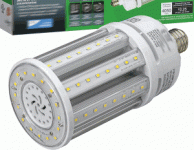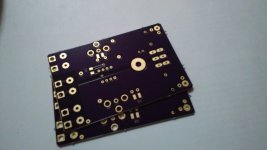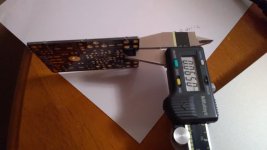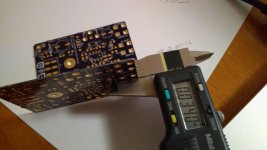I can't see how you can conclude one from the other.
You could as well say: 'Since these guys are doing it, they don't know what they are doing'
Jan
I can't see how you can conclude one from the other.
You could as well say: 'Since these guys are doing it, they don't know what they are doing'
Jan
True Jan, but they are not the only one doing it like that. Few companies are having similar topology. See (B.M.C. with MCCI phono, Avari Audio, Aqvox...)
As far as I know Dr. Noburu Tominari of Dynavector was the first to propose using the MC cartridge as a current source and amplify the current from it.
"Current amplification, also called Current Injection, or CI, is of course the same as a current to voltage (I/V) converter for DACs, except with DACs the source resistances and current levels are higher. Current outputs of moving coil cartridges vary considerably depending on the coil windings of the cartridge. In general, the lower the internal resistance of the cartridge (10 ohms or less), the better the cartridge tolerates the short and produces a usable current output. Many of the higher internal resistance cartridges sound constrained by the shorted output and do not benefit from current injection. However, with the right low internal resistance cartridges, listening to a current injection phono preamp opens the listener to a beautiful new experience of vinyl music without magnetic distortion."
Regards
The Sept 2019 issue of The Absolute Sound reveals their 2019 Golden Ear Awards. Have a look at page 66, in which reviewer Andre Jennings gives a Golden Ear award to the Channel D Lino C Phonostage:
Seems to be well-regarded.
(I didn't know the acronym "AGM" and had to look it up (link) -- it's a type of battery construction: Absorbent Glass Mat)
Channel D Lino C 2.0 is a current-mode (transimpedance) phonostage for low-output, low-impedance, moving coil cartridges. The electronic circuitry is direct-coupled (no coupling capacitors), and said to have wide bandwidth, low distortion, and ultra-low noise. Powered by an internal, automatically recharging, high-current AGM lead/acid battery ....
Sonically, the Lino C 2.0 is very linear and coherent-sounding, sure-footed, and solidly grounded (non fidgety) with music reproduction. These characteristics allow the music to flow with little to no aggression from any of the cartridges I used on any of the music played through the device. ... the result is completely non-fatiguing in any way, while summoning a sense of serenity around music playback. The resulting soundstage is reproduced with excellent width and depth, instrument location, performance interplay, and musical timbre, provided those features are recorded on the albums.
Sonically, the Lino C 2.0 is very linear and coherent-sounding, sure-footed, and solidly grounded (non fidgety) with music reproduction. These characteristics allow the music to flow with little to no aggression from any of the cartridges I used on any of the music played through the device. ... the result is completely non-fatiguing in any way, while summoning a sense of serenity around music playback. The resulting soundstage is reproduced with excellent width and depth, instrument location, performance interplay, and musical timbre, provided those features are recorded on the albums.
Seems to be well-regarded.
(I didn't know the acronym "AGM" and had to look it up (link) -- it's a type of battery construction: Absorbent Glass Mat)
Well, since these guys are doing it, they must know something we don't.
View attachment 780430
I don't see how that follows. People do daft things all the time.
I don't have statistics but I am very sure that the vast majority of phono inputs are voltage-sensing, because it works.
Current sensing brings in a whole new set of issues about gain, cartridge resistance, cartridge inductance etc etc. Why would you want to do that?
Bear in mind that voltage-sensing is what cartridges are designed for.
I don't see how that follows. People do daft things all the time.
I don't have statistics but I am very sure that the vast majority of phono inputs are voltage-sensing, because it works.
Current sensing brings in a whole new set of issues about gain, cartridge resistance, cartridge inductance etc etc. Why would you want to do that?
Bear in mind that voltage-sensing is what cartridges are designed for.
For me current sensing is a different approach (I like different), better or worse, i'm no expert to say that, that's why I suggested in the first place. In any case, some of the current sensing phono preamps got great online reviews and I have not seen any diy approach on that. Some of the claimed advantages: no need for resistive loading, ultra low noise amplification.
Last edited:
Have a quick look on Google Patents. Famous phonostage design guru John Curl took out a patent on a transimpedance (virtual ground) MC phono cartridge amplifier in 1976 (!!).
Its noise is remarkably low, and -- hallelujah -- the semiconductors used to build it are still in Active Production today, 43 years later. In thru-hole packages. diyAudio member "bonsai" included JC's circuit in a "bake off" / "shootout" thread of quite a few MC phonostage amplifiers. Spend some time and look for yourself.
Its noise is remarkably low, and -- hallelujah -- the semiconductors used to build it are still in Active Production today, 43 years later. In thru-hole packages. diyAudio member "bonsai" included JC's circuit in a "bake off" / "shootout" thread of quite a few MC phonostage amplifiers. Spend some time and look for yourself.
Have a quick look on Google Patents. Famous phonostage design guru John Curl took out a patent on a transimpedance (virtual ground) MC phono cartridge amplifier in 1976 (!!).
Its noise is remarkably low, and -- hallelujah -- the semiconductors used to build it are still in Active Production today, 43 years later. In thru-hole packages. diyAudio member "bonsai" included JC's circuit in a "bake off" / "shootout" thread of quite a few MC phonostage amplifiers. Spend some time and look for yourself.
Thanks you for suggestion Mark. I will definitely look into in
The Sept 2019 issue of The Absolute Sound reveals their 2019 Golden Ear Awards. Have a look at page 66, in which reviewer Andre Jennings gives a Golden Ear award to the Channel D Lino C Phonostage:
Sonically, the Lino C 2.0 is very linear and coherent-sounding, sure-footed, and solidly grounded (non fidgety) with music reproduction. These characteristics allow the music to flow with little to no aggression from any of the cartridges I used on any of the music played through the device. ... the result is completely non-fatiguing in any way, while summoning a sense of serenity around music playback. The resulting soundstage is reproduced with excellent width and depth, instrument location, performance interplay, and musical timbre, provided those features are recorded on the albums.
Not for the first time, I suspect that someone has invented a special jargon generator for hifi 'reviewing'.
Not for the first time, I suspect that someone has invented a special jargon generator for hifi 'reviewing'.
I myself have created a jargon generator in Excel, for the purpose of convivial mockery. Its vocabulary includes these words and more
Code:
clarity
cohesive
crisp
delicate
detailed
ethereal
expansive
extended
finesse
fluid
focused
forceful
lithe
lush
refinedStrangely enough I have heard a few diy pre-amps designed for low output MC cartridges using transimpedance amplifiers for the input. They seemed to work just fine with the right cartridge, i.e. acceptably low noise, distortion and frequency response behavior.
Long ago I experimented with one built around a couple of AD797 - it seemed to work pretty well, unfortunately I have long since lost my notes, the cartridge I used it with was a very tired DL103 IIRC. (I suspect a cartridge with much lower winding resistance would work substantially better - this was a bit hissy as memory serves.)
Maybe just another (if odd) way to accomplish the goal.
Guys who can't design/don't understand STEM write prose. I find it very difficult to wade through those articles these days and mostly don't. I do have friends in the trade though and not all of their observations are off the mark.
Ever consider covering strain gauge cartridge pre-amp design at some point? (Yeah the only ones available in any quantity at sane prices are 40 year old Panasonics)
Long ago I experimented with one built around a couple of AD797 - it seemed to work pretty well, unfortunately I have long since lost my notes, the cartridge I used it with was a very tired DL103 IIRC. (I suspect a cartridge with much lower winding resistance would work substantially better - this was a bit hissy as memory serves.)
Maybe just another (if odd) way to accomplish the goal.
Guys who can't design/don't understand STEM write prose. I find it very difficult to wade through those articles these days and mostly don't. I do have friends in the trade though and not all of their observations are off the mark.
Ever consider covering strain gauge cartridge pre-amp design at some point? (Yeah the only ones available in any quantity at sane prices are 40 year old Panasonics)
The Sept 2019 issue of The Absolute Sound ........Sonically, the Lino C 2.0 is very linear and coherent-sounding, sure-footed, and solidly ....
What great stuff!!!
In another life I review lightbulbs. Bore-ing! How about some plagiarized zest?
XYZ's LED 360° light bulbs are very linear and coherent-looking, sure-footed, yet not solidly grounded to the electric supply. These characteristics allow the light to flow with little to no aggression. Completely non-fatiguing in any way, while summoning a sense of serenity around the vision process. The resulting lightstage is reproduced with excellent width and depth, object location, wavelength interplay, and visual timbre.
Attachments
Last edited:
Personally, I realized that my subjective impressions of sound systems and other machines depends at least as much on my own state of heath and lack of sleep. Given my personal ups and downs, I know that I can not trust my subjective impressions and find such reviews as humerus at best. The only thing funnier is those who insist that instrumentation can not match human perception, although, the wrong instrumentation will of course, fail, but that reflect another human failure, ie the brain.
For me current sensing {....}and I have not seen any diy approach on that.
You have probably missed this from Erno and Sigurd in Linear Audio Vol 6.
Attachments
Personally, I realized that my subjective impressions of sound systems and other machines depends at least as much on my own state of heath and lack of sleep. Given my personal ups and downs, I know that I can not trust my subjective impressions and find such reviews as humerus at best. The only thing funnier is those who insist that instrumentation can not match human perception, although, the wrong instrumentation will of course, fail, but that reflect another human failure, ie the brain.
It is great to once in a while meet someone who actually knows himself and understands his own functioning, and still remains sane
Jan
You have probably missed this from Erno and Sigurd in Linear Audio Vol 6.
Thanks Jan, I missed this one indeed.
Personally, I realized that my subjective impressions of sound systems and other machines depends at least as much on my own state of heath and lack of sleep. Given my personal ups and downs, I know that I can not trust my subjective impressions and find such reviews as humerus at best. The only thing funnier is those who insist that instrumentation can not match human perception, although, the wrong instrumentation will of course, fail, but that reflect another human failure, ie the brain.
Some people are quite shameless in their use of adjectives describing playback of music, adjectives that have nothing to do with sound or music. One wonders what they've been smoking to achieve such synaesthesia! Its a fun game to make up extreme examples of this foible, "monstrously rigid highs and thixotropically smooth midrange with hints of camomile".
I'm not saying you can't use adjectives, but please be meaningful like "shrill vocals", "weak bass", "poor bass extension", "audible mains hum", you're trying to communicate an issue, not audition for pseud's corner! Superlatives are verboten, we are only interested in possible shortcomings.
And the same people keep finding some device that sounds fantastically better than anything they've experienced before. How crap must their first amplifier have been? Surely all that's happening is they forgot how good that music track is and been surprized by it - a failure of memory, and some dollops of expectation bias of course. We all do it.
I just can't be doing with this indulgence
I'd call them 2.5 layers if its wire links for the 3rd layer, less confusing (!)
Yes its open to new descriptions such as 2.5 layer and 2.5 clamshell.
I think it can be useful. Possibly securing some ip.
Have to think some more on options.
This pic is of two 2oz copper 32mil boards.
-
Attachments
- Status
- This old topic is closed. If you want to reopen this topic, contact a moderator using the "Report Post" button.
- Home
- Source & Line
- Analogue Source
- Small Signal Audio Design 3rd edition: Douglas Self




